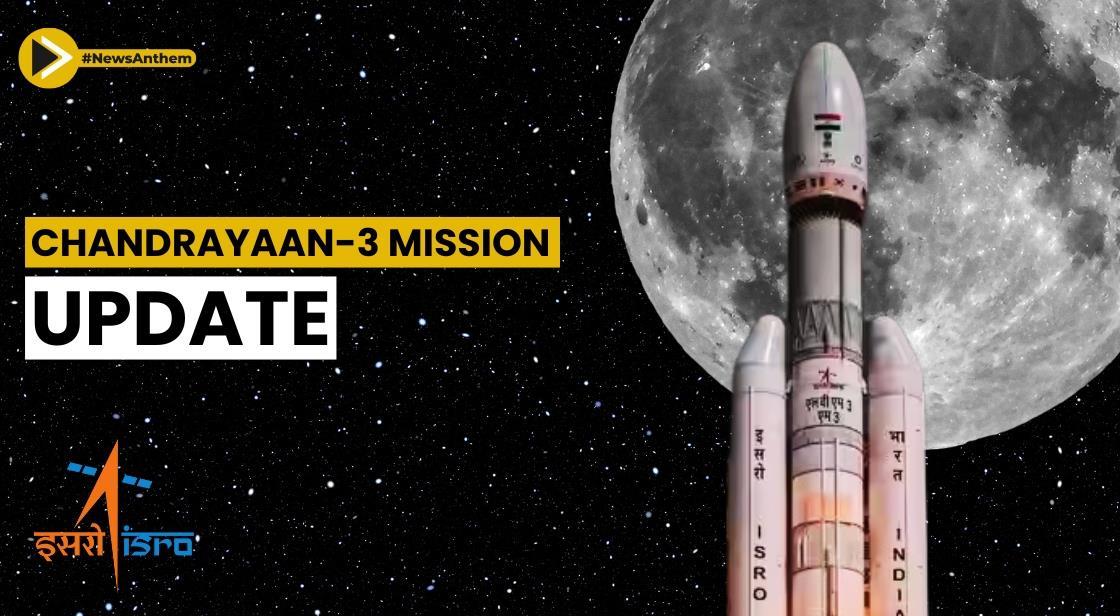Chandrayaan-3 Mission Achieves Another Milestone, Lander Module Separates from Propulsion Module

News Synopsis
Chandrayaan 3 Latest News: Vikram Lander Initiates Initial Deboosting for Lower Lunar Orbit
India's ambitious lunar exploration, Chandrayaan 3, has achieved a pivotal milestone in its journey toward making a soft landing on the Moon's southern pole. The recent successful separation of the Lander Module, housing the Vikram lander and Pragyan rover, from the Propulsion Module marks a significant advancement in the mission.
Key Milestone Achieved:
Separation of Lander Module: On August 17, the Chandrayaan 3 mission reached a notable achievement as the Lander Module, encompassing the Vikram lander and the Pragyan rover, was successfully detached from the Propulsion Module. This event is a critical step towards positioning the Lander Module into a lower orbit closer to the Moon's surface.
Preparations for Soft Landing:
With the Lander Module's successful separation, the next crucial phase involves gradually lowering it into an orbit that brings it closer to the lunar surface. Scheduled for a soft landing at the lunar south pole on the forthcoming Wednesday at 5.47 pm, this intricate process requires precision and meticulous planning.
Deboosting for Optimal Positioning:
The Indian Space Research Organisation (ISRO) elaborates that the Lander Module is set to undergo a "deboost," a procedure aimed at slowing down its speed. This maneuver is designed to position the Lander Module in an orbit where the closest point to the Moon, known as Perilune, is at a distance of 30 km, while the farthest point, Apolune, stands at 100 km.
This strategic orbit will serve as the starting point for the attempt to achieve a soft landing on the Moon's south polar region, scheduled for August 23.
ISRO's Update on the Process:
In a communication shared on X (formerly Twitter), ISRO conveyed, "Thanks for the ride, mate! said the Lander Module (LM). LM is successfully separated from the Propulsion Module (PM). LM is set to descend to a slightly lower orbit upon a deboosting planned for tomorrow around 1600 Hrs IST." Meanwhile, the Propulsion Module will continue its trajectory in the existing orbit, gathering valuable research data over the coming months and possibly years.
Advancing Toward Success:
Chandrayaan 3 Project Director M Annadurai underlines the significance of the current phase, likening it to the decisive overs in a cricket match. This phase holds the key to executing a successful soft landing on the Moon's surface and underscores the dedication and expertise of the entire Chandrayaan team.
Chandrayaan 3's Objectives:
Chandrayaan 3 serves as a sequel to Chandrayaan 2, with objectives encompassing the demonstration of a secure and gentle landing on the lunar terrain, rover exploration on the Moon's surface, and the conduct of in-situ scientific experiments. This mission underscores India's commitment to advancing its space capabilities and contributing to lunar research.
Learning from the Past:
The Chandrayaan 2 mission encountered a setback during its lunar phase when the Vikram lander experienced anomalies in its braking system, leading to an unsuccessful landing attempt on September 7, 2019. This subsequent mission, Chandrayaan 3, builds upon the lessons learned from its predecessor and aims to achieve a triumphant landing.
A Global Achievement in the Making:
Upon the successful completion of Chandrayaan 3, if India manages to land a robotic lunar rover on the Moon's surface in its second attempt within four years, the nation will join the ranks of the United States, China, and the former Soviet Union as one of the select few to master the intricacies of soft-landing technology.
Some relevant and latest facts about the Chandrayaan-3 mission:
-
The Chandrayaan-3 mission is India's third lunar mission.
-
The mission's objectives are to demonstrate safe and soft landing on the lunar surface, roving on the moon, and to conduct in-situ scientific experiments.
-
The Lander Module, which consists of the Vikram lander and the Pragyan rover, was successfully separated from the Propulsion Module on August 18, 2023.
-
The Lander Module is now set to undergo a deboost, which is the process of slowing down the spacecraft, to lower its orbit and prepare for a soft landing on the lunar south pole on August 23.
-
The deboost is scheduled to take place on August 19, 2023, at 4:00 PM IST.
-
The Propulsion Module will continue its journey in the current orbit for months or even years, collecting research data.
-
If the Chandrayaan-3 mission succeeds in landing a robotic lunar rover in ISRO's second attempt in four years, India will become the fourth country to master the technology of soft-landing on the moon's surface after the US, China and the former Soviet Union.
Here are some additional facts that you may find relevant:
-
The Chandrayaan-3 mission is a follow-on mission to Chandrayaan-2, which had failed in its lunar phase when its lander 'Vikram' crashed into the surface of the moon following anomalies in the braking system in the lander while attempting a soft landing on September 7, 2019.
-
The Chandrayaan-3 mission is a major milestone for India's space program and will help to further India's scientific and technological capabilities.
-
The success of the Chandrayaan-3 mission will also boost India's international standing and help to make India a more competitive player in the global space race.
Conclusion:
Chandrayaan 3's journey towards a soft landing on the Moon's south pole showcases India's determination to excel in space exploration.
The successful separation of the Lander Module and the impending deboosting process underscore ISRO's commitment to achieving its goals while expanding humanity's understanding of lunar landscapes.
As Chandrayaan 3 advances towards its destination, the anticipation of a successful landing and valuable scientific insights continues to grow.
You May Like









